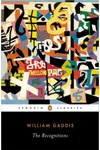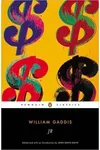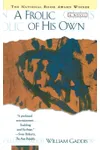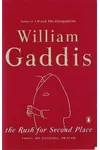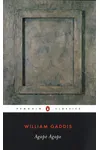Picture an American novelist weaving intricate tapestries of dialogue and satire, exposing the absurdities of modern life—meet William Gaddis! Born in 1922, this literary titan redefined the novel with sprawling, challenging works like The Recognitions and JR. With a sharp eye for the chaos of capitalism and a knack for capturing human authenticity, Gaddis became a cornerstone of 20th-century literature.
His books aren’t light reads, but they’re unforgettable journeys. A two-time National Book Award winner and MacArthur ‘Genius’ Grant recipient, Gaddis’s legacy thrives among readers who crave stories that provoke and inspire. Ready to dive into his world?
The Making of William Gaddis
Born in New York City on December 29, 1922, William Gaddis grew up in a world of shifting cultural tides. After attending Harvard University, where he edited the Lampoon, he left without a degree, diving into a bohemian life of travel and odd jobs. From Mexico to Spain, these experiences shaped his outsider’s perspective on American society. By his late 20s, Gaddis was crafting his debut novel, The Recognitions, a dense masterpiece that would launch his career, albeit with mixed initial reception.
William Gaddis’s Unforgettable Stories
Gaddis’s novels are like symphonies—complex, layered, and driven by voices. His debut, The Recognitions (1955), follows Wyatt Gwyon, an artist grappling with forgery and authenticity in a materialistic world. Spanning nearly 1,000 pages, it blends art, religion, and satire, earning praise as a landmark of postmodernism despite early commercial struggles.
In JR (1975), Gaddis turned his lens on capitalism, crafting a chaotic tale of an 11-year-old stock market prodigy. Told almost entirely through dialogue, it’s a biting critique of greed that won the National Book Award. Later works like Carpenter’s Gothic (1985) and A Frolic of His Own (1994), which also snagged a National Book Award, showcase his knack for blending humor with sharp social commentary.
Gaddis’s style—dense, dialogue-heavy, and often fragmented—challenges readers but rewards them with insights into art, identity, and society. His influence echoes in writers like Thomas Pynchon and David Foster Wallace, who adopted his experimental spirit.
Why William Gaddis Matters
William Gaddis didn’t just write novels; he dissected the American Dream. His critiques of consumerism and authenticity resonate in today’s tech-driven, image-obsessed world. Though his works demand patience, they’ve inspired a cult following and academic devotion, cementing his place as a literary innovator. After his death in 1998, Gaddis’s novels continue to spark debates and discoveries, proving their timeless relevance.
About William Gaddis
- Born: December 29, 1922, New York City
- Key Works: The Recognitions, JR, A Frolic of His Own
- Awards: Two National Book Awards, MacArthur ‘Genius’ Grant
- Died: December 16, 1998
Snag The Recognitions or JR and dive into William Gaddis’s brilliant, brain-bending world of satire and insight!
